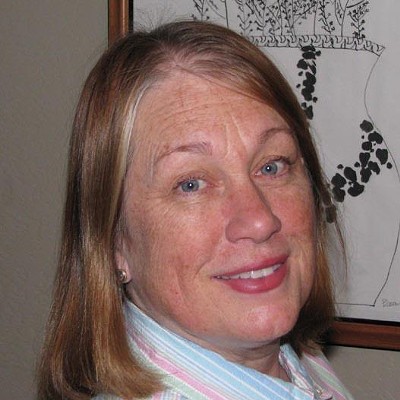Welcome back to Explicitly Graphic, a monthly column by Cynthia Clark Harvey (who's working on a graphic novel of her own). From time to time, Harvey will review graphic novels, talk to artists, and dive into the scene of all things explicitly graphic. Today, she sits down with author and artist Carol Tyler.
Carol Tyler has stories to tell -- both her own and her parents' -- though it's not always clear cut whose generation lays claim to a particular tale.
Tyler's new graphic novel, "You'll Never Know (Book III), Soldier's Heart," released this week, completes the trilogy about her father's WWII service and its far-reaching effects on her family.
"You'll Never Know" Books 1 and 2 are beautiful, with Tyler's masterful use of color adding mood and emotional texture to every page. But it's the story that pulls the reader through.
See also: - Cartoonist Ted Rall on The Occupy Movement's Flawed Model, Upcoming Elections, and His Latest Work, "The Book of Obama" - Check It Out: Graphic Novels at Phoenix Libraries - Noteworthy Graphic Novels by Women: Recent, Upcoming, and One That I Cannot Friggin' Believe!
Book 2, "Collateral Damage" ended in a place that left me breathless with tension over where Book 3 would take me. Now, my two year wait is nearly over.
I look forward to spending next weekend reading "Soldier's Heart," (Soldier's Heart is the American Civil War term for what is now called PTSD) trusting the sure hands of comics legend Carol Tyler. We spoke recently by phone.
I know your mom died this year. Your dad's still alive? How did your parents feel about these books in which so much is revealed of your family life? Yes, dad's still around. He's 93. Mom saw the artwork for Soldier's Heart before she died. She cried; it had her seal of approval. She was so receptive. I got her to draw a page for the last book. The first book, in '09, 'A Good & Decent Man' - they were both beaming with pride. The second book, 'Collateral Damage' - well, they were both confused by it.
You know, it details the difficulties. It has more about my pain in it. The part where I was talking about my being a little troublemaker, Dad thought it was about Julia [Tyler's daughter with also-legendary cartoonist Justin Green]. I worked on "Soldier's Heart" while Mom was in hospice and finished the very last pages just after she died. Chuck [Dad] read it and wasn't so proud. It gets down to his painful past, his vulnerabilities. He said "I'm not showing that to anybody down at the VA."
Book 2, 'Collateral Damage' features a retelling of "The Hannah Story" [Hannah is Tyler's mother; the story is about the tragic death of two year old Ann, Tyler's oldest sister] which was first published in 1995. This was a stand-alone? I don't know the history. I was asked to contribute to the Drawn & Quarterly anthology. I'd just left a job and I used the luxury of that time to draw the Hannah story.
Did your telling that story have anything to do with undertaking your dad's story? Or his opening up to you? No. He never read "The Hannah Story." Mom read it, set it down, walked away and said, "Why did you spend your time doing that?" She also said that Dad wouldn't be able to handle it. Since she passed away, he started to talk about Ann's death. He told me some things I never heard from Mom, but I don't know how much of it is true. Neither of them said anything about "The Hannah Story" after seeing it in Book 2.
I love "Late Bloomer," [2005] which I didn't find until after the "You'll Never Know" books. Well, some people thought Late Bloomer would be it for me. It's a twenty-year collection of work done while my tot was little. I did it between homework packets and various jobs.
But after all the different jobs [Tyler's first book, "The Job Thing" was published by Fantagraphics, her publisher still, in 1993] you teach comics at the university level now, right? How did that come about? After "Late Bloomer," I realized I really was committed to cartooning. I thought since I know this stuff, I should be teaching it. So I marched into the college and told them that. They said they'd try it with one class. I wrote up the curriculum. I approached it like an elementary teacher with table groups and incentives. We have a lot of fun, and I give them good grades. How can you give a bad grade if they try?
You studied painting but when you first started doing comics, there was no way to reproduce color. How was that transition to a black and white world? Painting stopped when I started comics which had to be done in black and white. I got published in R. Crumb's Weirdo back in the 80s when Aline Crumb was the editor. She'd set deadlines and I'd have to hustle to meet them. I did what I could, always, despite my motherhood responsibilities. Most of that work is in "Late Bloomer." I was glad when scanning technology came along and made it possible to play with color again. But I loved the black & white experience, learning how and when to cross-hatch.
In the YNK books the color is so incredible, which do you prefer? I'm going to give you a roundabout answer. Over the past 10 years, I crossed the State of Indiana twice a month, 100,000 miles worth, going to visit my mom and dad and take care of them in my little pick-up across the great American Midwest. I don't know if you know what's it's like out there . . .
Farmland. There aren't any names on the roads and they just stretch out. So I would simply follow the sun and head west or east, following whatever road was in front of me. I could stop the car in the middle of the road and take pictures of whatever I found intriguing. Everything you want to know about color is there in the landscape.
Yet, after years of these photos, I realized it was a black and white graphic effect that my eye was consistently attracted to. In the [YNK] books I blended my black and white chops with color using 53 custom-mixed inks. I named the colors 'Blood', 'Denim', 'Lucky Forward' and so on. I mixed up enough of each color to make it all the way through - but I didn't know I'd be using these inks for eight years. And each page was so labor intensive, taking anywhere from five to forty hours to complete.
With the ink washes, somehow, though I know that might be far from the truth, every page still has this very spontaneous quality to it. Sometimes, once in awhile, they were. In book one, the one that says, "Not all scars are visible," that was the very last page I did in that book. I put it off until last. I wasn't sure exactly how it was supposed to look. Then one morning I woke up and I knew exactly how to do it and knocked it out rather quickly.
I've turned a few people on to your work, people who never really read graphic novels before, and part of what I think they find extremely appealing is the obviously high level of craftsmanship. I tried to do honor to the craftspeople who came before me. I tried to do the books with the same care that my ancestors took when they did what they did, whether it was fixing the fence or creating the best pie.
Dad was a plumber, most of what he'd do was just covered up when they built the house, but he'd always "wipe the joint," clean off the stuff around where the pipes were put together, even though it was never going to be seen after the walls covered it up. Even if he was down in a ditch putting pipes together he always wiped the joint. Mom, she was what you call "clever." You know clever like she could take a Kentucky Fried Chicken bucket and turn it into a wolf's head for a Red Riding Hood Halloween costume.
How fortunate that while I was writing the books, I could call her: "Mom, I need a line. If Dad says such and such, what would you say?" Even at the end, in the hospital, she was throwing lines at me.
Your stories are at once deeply personal, but also very much about entire generations of Americans. I know you did a lot of research in order to fill in the gaps of your father's WWII experience that he couldn't or wouldn't talk about. I felt a real responsibility to write about ordinary guys like him. There aren't really a lot of books written about the grunts. Yet, my books aren't just about my dad's war experience; they're about how WWII shaped generations. I believe lots of men had PTSD like my Dad. It shut them down inside. If we'd had fully available fathers, emotionally and spiritually, the rebellion of the 60's and 70's maybe wouldn't have happened.
I did a presentation on this concept recently at the Military Writers Society of America. They understood immediately. There are a couple of women who have written about this, Leila Levinson and Carol Schulz Vento: something bad-ass happened to these men, our fathers, and our culture knows its deep imprint.
Are there more projects on the drawing table? Or do you need a rest? I'm exhausted and in mourning. But yes, there are many possibilities. Although I think my next project might be just a bit more about mom and dad. I'm not quite finished with those two yet.











